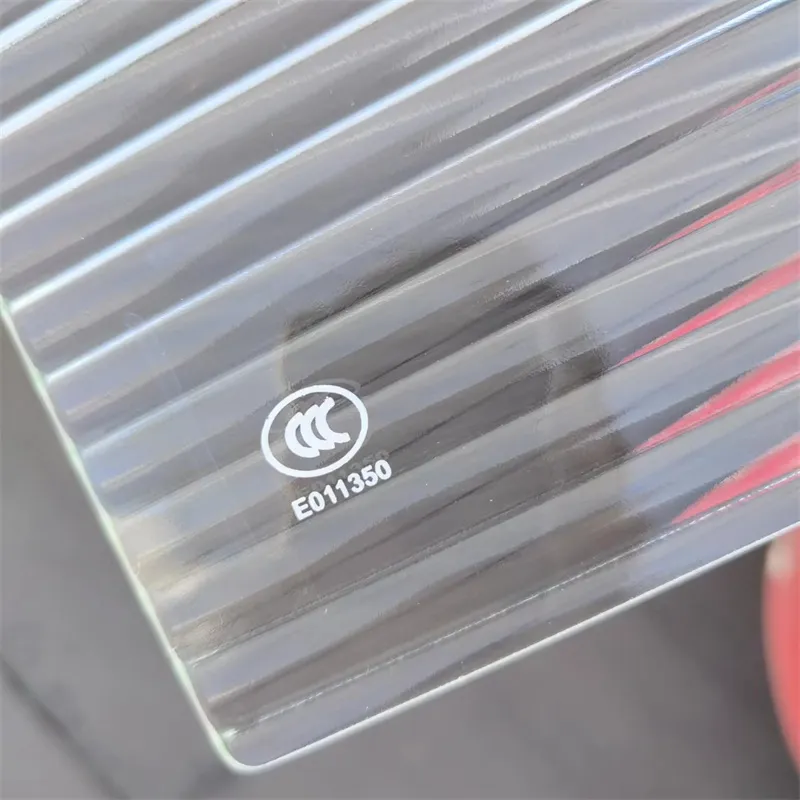10 月 . 16, 2024 06:48 Back to list
Understanding the Benefits and Uses of Laminated Glass Windows in Modern Architecture
Laminated Glass Windows A Modern Solution for Safety and Aesthetics
In the realm of modern architecture and design, the incorporation of advanced materials has revolutionized the way we experience buildings, homes, and public spaces. One such material that has gained significant attention over the years is laminated glass. Laminated glass windows represent an innovative fusion of safety, aesthetics, and functionality, making them an increasingly popular choice for architects and builders worldwide. In this article, we will explore what laminated glass is, its benefits, applications, and why it is especially suited for contemporary construction.
What is Laminated Glass?
Laminated glass consists of two or more layers of glass that are bonded together with an interlayer, usually made of polyvinyl butyral (PVB) or ethylene-vinyl acetate (EVA). This interlayer is typically transparent, offering clarity while providing additional safety mechanisms. During the lamination process, the layers are subjected to heat and pressure, creating a durable bond between the layers. The result is a strong, resilient product that possesses unique characteristics not found in traditional glass.
Benefits of Laminated Glass Windows
1. Enhanced Safety One of the primary advantages of laminated glass is its ability to withstand impact. In the event of breakage, the interlayer holds the glass shards together, significantly reducing the risk of injury from flying glass pieces. This feature is particularly beneficial in areas prone to storms or extreme weather conditions, as well as in high-traffic environments.
2. Noise Reduction Laminated glass offers superior acoustic insulation compared to regular glass. The interlayer can dampen sound waves, making laminated glass windows an excellent choice for buildings in noisy urban environments or near transportation hubs.
3. UV Protection The interlayer used in laminated glass also provides ultraviolet (UV) protection, blocking up to 99% of harmful UV rays. This feature is crucial for preserving interior furnishings and artworks, preventing fading and damage over time.
4. Increased Security Laminated glass windows enhance security by making it more difficult for intruders to break through. The sturdy construction means that should an attempted break-in occur, it would take considerable time and effort to penetrate, serving as a significant deterrent.
laminated glass windows

5. Energy Efficiency Many laminated glass products are designed to offer advanced thermal insulation, which can contribute to lower energy costs. By minimizing heat loss in the winter and preventing heat gain in the summer, these windows help maintain a comfortable indoor climate.
Applications of Laminated Glass Windows
Laminated glass is versatile and suitable for various applications across different sectors. In residential construction, homeowners often choose laminated glass windows for patio doors, skylights, and large facades, all of which benefit from safety and aesthetic appeal.
In commercial buildings, laminated glass is widely used in office buildings, retail stores, and educational institutions. Its noise reduction properties are particularly advantageous in environments bustling with activity. Moreover, in the automotive industry, laminated glass is commonly used for windshields, providing both safety and comfort for drivers and passengers alike.
The Aesthetic Appeal of Laminated Glass
Beyond practical benefits, laminated glass windows offer a modern aesthetic that enhances the visual appeal of any structure. Available in various thicknesses and colors, laminated glass can be customized to meet specific design needs. Architects are drawn to its clean lines and ability to create expansive views while ensuring occupants feel safe and secure.
Furthermore, laminated glass can also be treated with various finishes, including decorative patterns, to complement the architectural style of a building. This versatility enables designers to create stunning visual statements, blending functionality with artistry.
Conclusion
Laminated glass windows are a testament to the advancements in materials science and architectural design. With their unmatched combination of safety, noise reduction, UV protection, and energy efficiency, laminated glass has solidified its place as a preferred choice in modern construction. As architects and builders continue to seek innovative solutions to meet the demands of safety and aesthetics, laminated glass is sure to remain at the forefront of design considerations, transforming the way we interact with our built environments. Embracing this material not only enhances the safety and comfort of spaces but also contributes to the visual narrative of contemporary architecture.
-
Wired Glass: A Strong and Secure Glass Solution for Various Applications
NewsNov.04,2024
-
Tinted Glass: A Stylish and Functional Choice for Modern Homes
NewsNov.04,2024
-
The Elegance and Versatility of Silver Mirrors
NewsNov.04,2024
-
The Advantages of Copper Free Mirrors
NewsNov.04,2024
-
Tempered Glass: A Reliable Choice for Modern Applications
NewsNov.04,2024
-
Pattern Glass: Stylish and Functional Glass for Modern Design
NewsNov.04,2024
Related PRODUCTS














